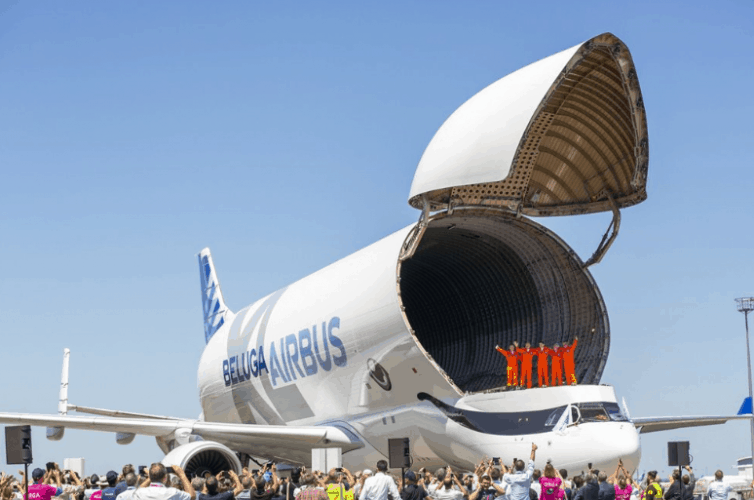Airbus BelugaXL cargo transport makes flight debut
The BelugaXL, Airbus’ latest iteration of cargo transporter for its own aircraft parts, has completed its maiden flight.


Based on an A330-200 Freighter, the BelugaXL is powered by two Rolls Royce Trent 700 engines. The aircraft's lower fuselage was assembled on the A330 final assembly line, then moved to building L34 at Airbus’ Toulouse plant, a facility previously used for A350 and A380 static testing. It took around three months and 8,000 parts to first cut away the upper fuselage, then prepare the aircraft for the enlarged cargo hold to be fitted. The oversized bay has a payload capacity of 51 tonnes, compared to the 47 tonnes of the BelugaST, which the XL will replace. According to Airbus, the 63m freighter can carry up to seven adult African elephants.
Airbus will use the aircraft to ship large components, such as wings for the A350XWB, between 11 European bases. Unlike its predecessor, the XL will be able to transport two A350 wings together. Bringing an A350 to the final assembly line using the current Beluga takes nine times the flying hours required for an A320. The BelugaXL will go some way to redressing that disparity. At present, the existing five BelugaSTs fly five times a day, six days a week, and clocked a total flight time in excess of 10,000 hours in 2017. As the XL comes into service, the older Beluga will be retired around 2021.
Register now to continue reading
Thanks for visiting The Engineer. You’ve now reached your monthly limit of news stories. Register for free to unlock unlimited access to all of our news coverage, as well as premium content including opinion, in-depth features and special reports.
Benefits of registering
-
In-depth insights and coverage of key emerging trends
-
Unrestricted access to special reports throughout the year
-
Daily technology news delivered straight to your inbox










Water Sector Talent Exodus Could Cripple The Sector
Maybe if things are essential for the running of a country and we want to pay a fair price we should be running these utilities on a not for profit...